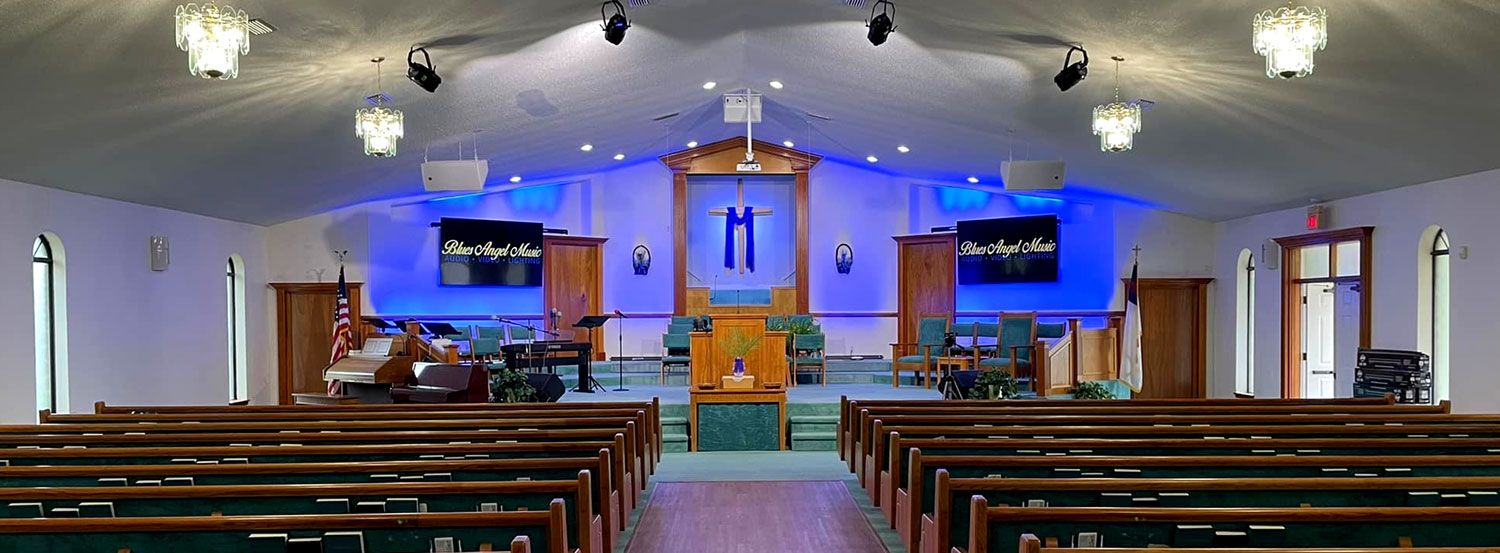Video System Installation
Designing the right video solution for your business, school, or house of worship starts with a consultation. There are a few questions before we can get your video system installation going, like what kind of setup do you need?
Live Broadcasting and Streaming
Before you can decide what equipment you need for your live broadcasting, you need to first decide what kind of broadcasting you intend to do, and what your budget is.
If you’re just getting started and plan to do a vlog or podcast, you can use equipment as simple as the smartphone in your pocket, a tripod, and a simple external microphone. This single-camera setup will allow you to connect to the internet easily and share your content across many social media channels. There are limitations in quality, video production, and how your content will be perceived.
For a more professional setup, still including vlogs and podcasts, but also adding seminars and small events, consider upgrading to a quality HD camera, multiple microphones, and video encoding software. These upgraded devices and the addition of encoding software will provide a more polished and professional look. Your videos will look clearer, your audio will be more accurate, and the overall perception of your content will be that it is more professional.
If you plan to broadcast concerts, church services, conferences, online television shows, plays, or other high-end content, you will need a professional level setup. This type of video system installation will include multiple HD cameras, several tripods and dollies, a video encoder, an audio mixer, graphics software, and a portable wi-fi device. With this setup you will be able to switch between camera feeds, add video overlays, adjust shots, and deliver a fully professional stream. Your content will be on-par with that of the best content online.

Video Walls
Video walls are made of multiple display panels, utilizing a video wall controller and a calibration mechanism that ensures all displays are showing the same brightness and color. Not all that long ago, these displays had to have a large bezel on them which broke up the image and made it seem unnatural. Today, these screens have a very thin, practically unnoticeable, bezel allowing for crisp images and displays of nearly limitless size.
These display walls are used in applications such as meeting rooms, digital signage, control rooms, churches, and even outdoors. Video walls are typically either LCD or LED.
LCD video walls are suited for long-term intensive use. Under optimal conditions, these displays can run 24/7 for many years. LCD displays have high brightness, good image quality, and comparatively low cost.
LED video walls go a step further, providing longer life, sharper images, deeper blacks, and more vibrant colors.
Digital Signage
Chances are you’ve seen digital signage before. In many applications it has surpassed traditional wood, metal, or paper signage. Digital signage uses video displays, not completely unlike computer monitors, to dynamically show branded content in stores, among other places.
The applications are nearly limitless. From corporate displays to restaurant menus, in schools and classrooms, airports, doctor’s offices, and hotel lobbies, digital signage is everywhere. The stunning look and rotating cache of images draw attention and bring more people’s eyes to your message.
Digital signage only requires a few key pieces to be in place, all of which can be controlled from one computer or from a cloud-based application distributing your content to multiple displays across multiple applications.
Contact us today to schedule a free consultation. Together we can determine the best equipment to maximize the sound in your space
